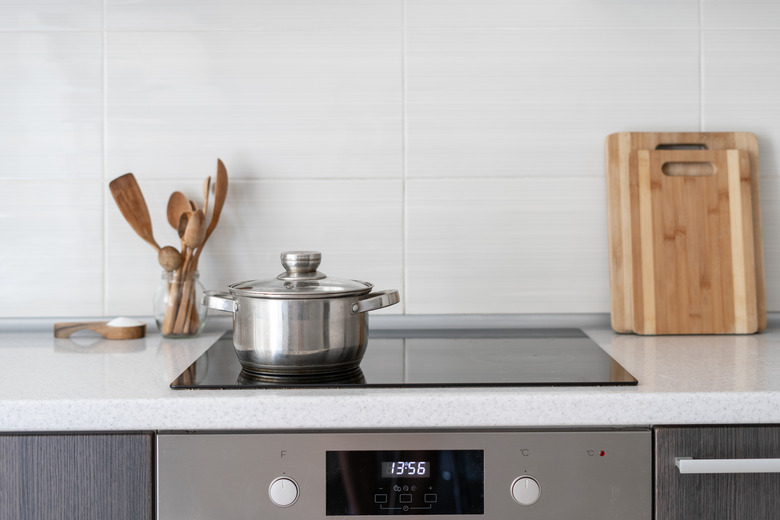Can You Use A Dutch Oven On A Glass-Top Stove?
Dutch oven recipes call for scintillating ingredients to be crisped, roasted, boiled or baked in the heavy cooker. It seems durable enough to handle anything. However, not all cooktops can handle the heavy-duty cast-iron Dutch oven. The glass stovetop can put up with a lot, but its slick surface requires a certain understanding of its mechanisms to ensure it doesn't get damaged and will cook with the pot you're planning on using.
Certain pots and pans work better than others on a cooktop. While Dutch ovens aren't necessarily banned from the surface of a glass-ceramic cooktop, they do require a little more care than other cookware.
Glass Stovetop Basics
Glass Stovetop Basics
A glass-ceramic stovetop has a nucleating agent that creates a crystalline structure that makes the surface more durable than regular glass. It's created to not react swiftly to temperature changes. Glass-ceramic stovetops are either induction or electric, which is also called radiant.
An electric ceramic stovetop has coils that radiate heat beneath the tempered glass. They work much the same as traditional electric stoves.
Induction stovetops use electromagnetic induction. The coils under the glass generate an electromagnetic field, much like a microwave. The benefit of this is that the cooktop doesn't get hot to the touch but the contents inside of the magnetic cookware that's placed on top of the stove will react to the electric currents and begin to heat up.
Cookware for Ceramic Stovetops
Cookware for Ceramic Stovetops
Stainless-steel cookware, cast iron, enameled cast iron and other types of metal cookware are induction compatible, meaning they can be used on a glass stovetop. However, they'll only work if the bottom of the pot has magnetic properties.
Copper, glass and aluminum cookware won't work on the glass cooktop unless they have a layer of metal with magnetic properties.
Using a Dutch Oven on an Electric Stove
Using a Dutch Oven on an Electric Stove
Misen suggests that a cast-iron Dutch oven only be used on glass-top stoves with care. The heavy pot can easily scratch or otherwise damage the glass when dragged across the surface when they are filled to the brim with food.
Heavy pots also tend to get dropped. Even a drop of a hot pot from a few inches above the stovetop can damage the surface.
Cast Iron on an Induction Stove
Cast Iron on an Induction Stove
Using an enameled cast-iron Dutch oven that has a protective layer on the bottom can ensure the surface of the induction cooktop stays scratch-free.
If the cast-iron cookware isn't coated, Induction Guide suggests using a piece of parchment paper or a baking mat under the rough, gritty bottom of the pan. A heat-resistant and non-metallic sheet will protect the cooktop without affecting the cooking process.
Cast-Iron Temperature Concerns
Cast-Iron Temperature Concerns
Cast iron takes longer to rise to the correct temperature compared to stainless steel. It also holds onto that high heat for longer, even after the ceramic cooktop has been cooled down.
The high heat emanating from a large Dutch oven over a lengthy period can cause the entire glass cooktop to become overheated. Therefore, boiling water in a cast iron Dutch oven or simmering a large pot of soup in the heavy pot can lead to overheating the ceramic stovetop and cause it to possibly turn off in order to cool down.
